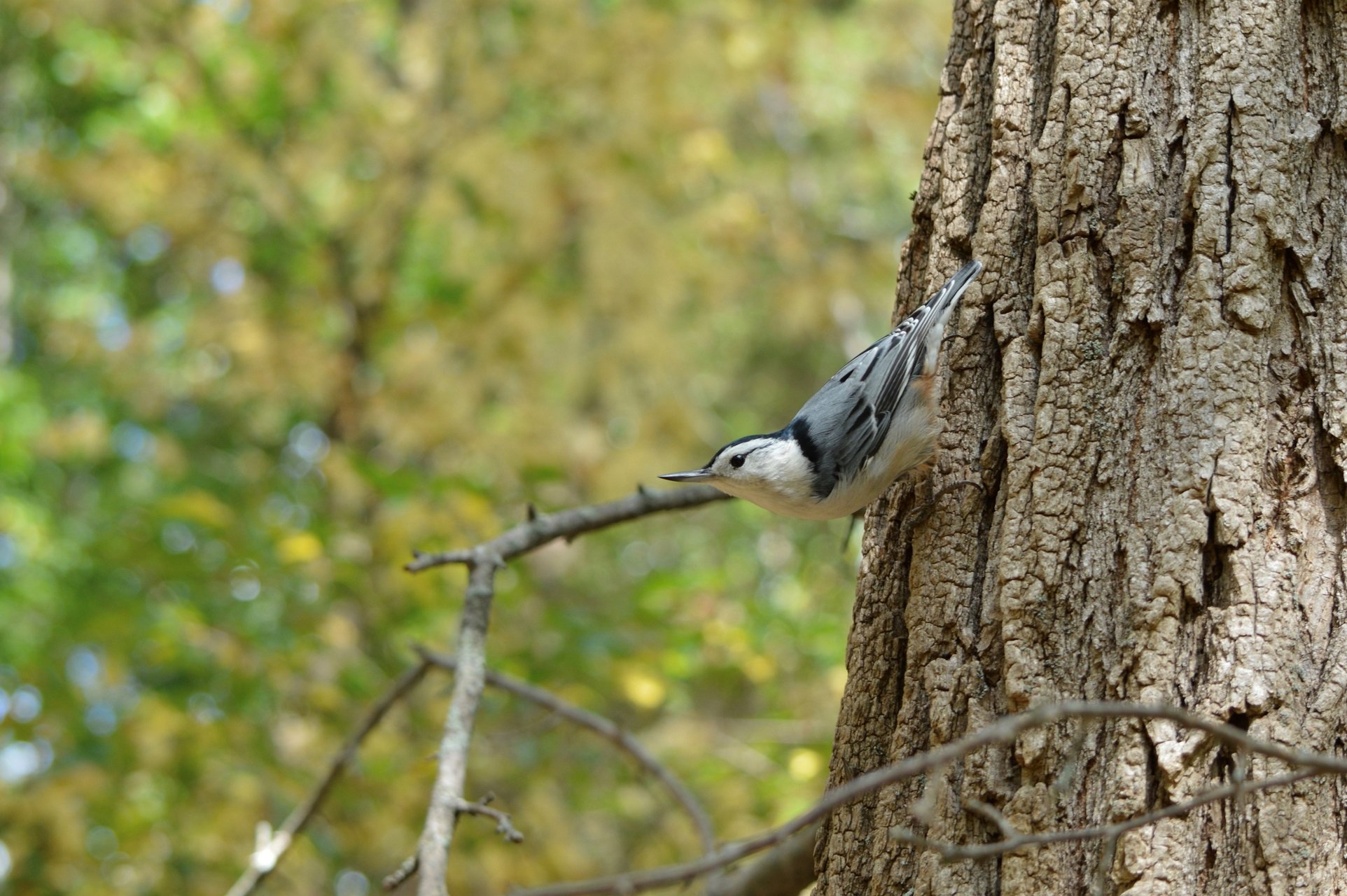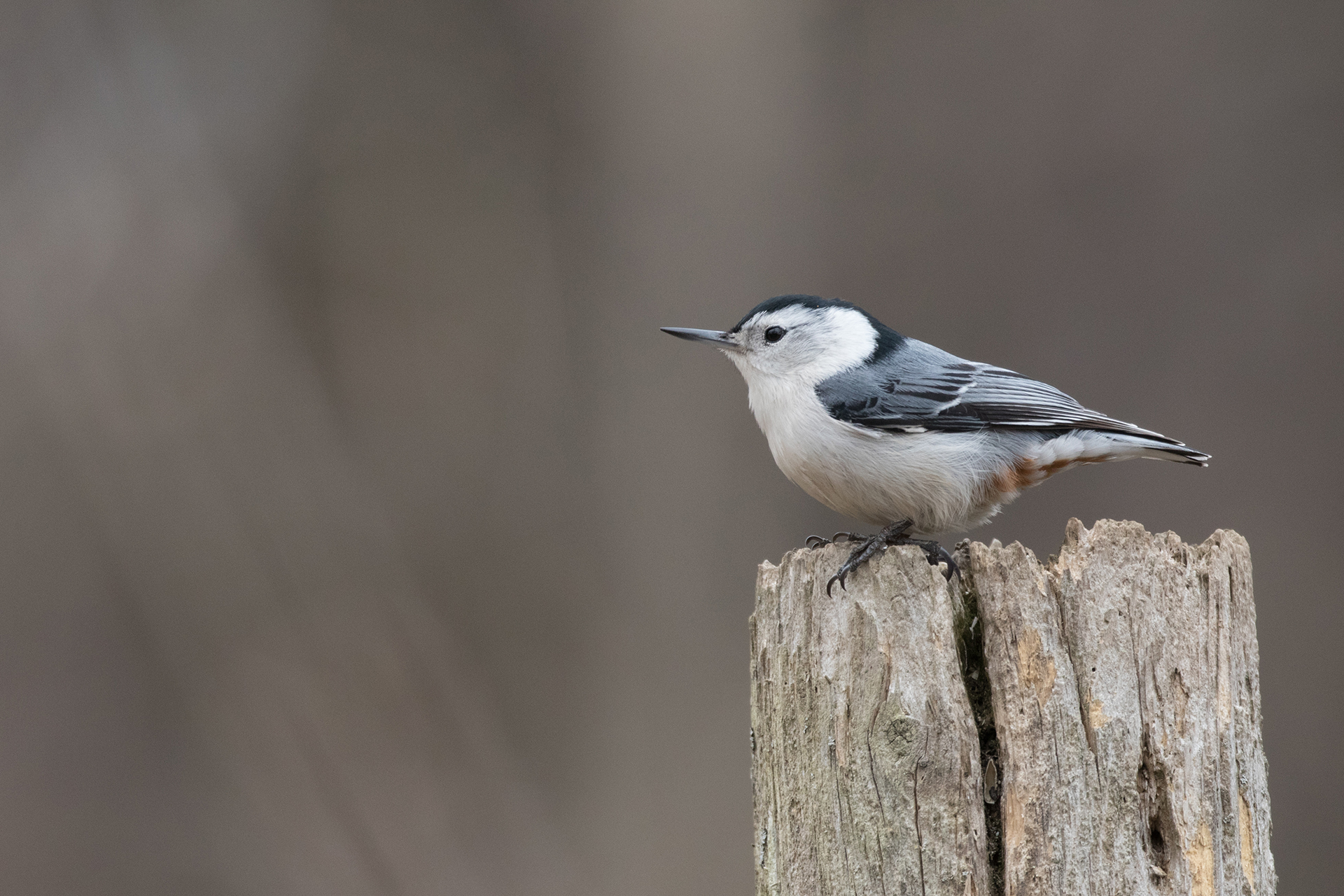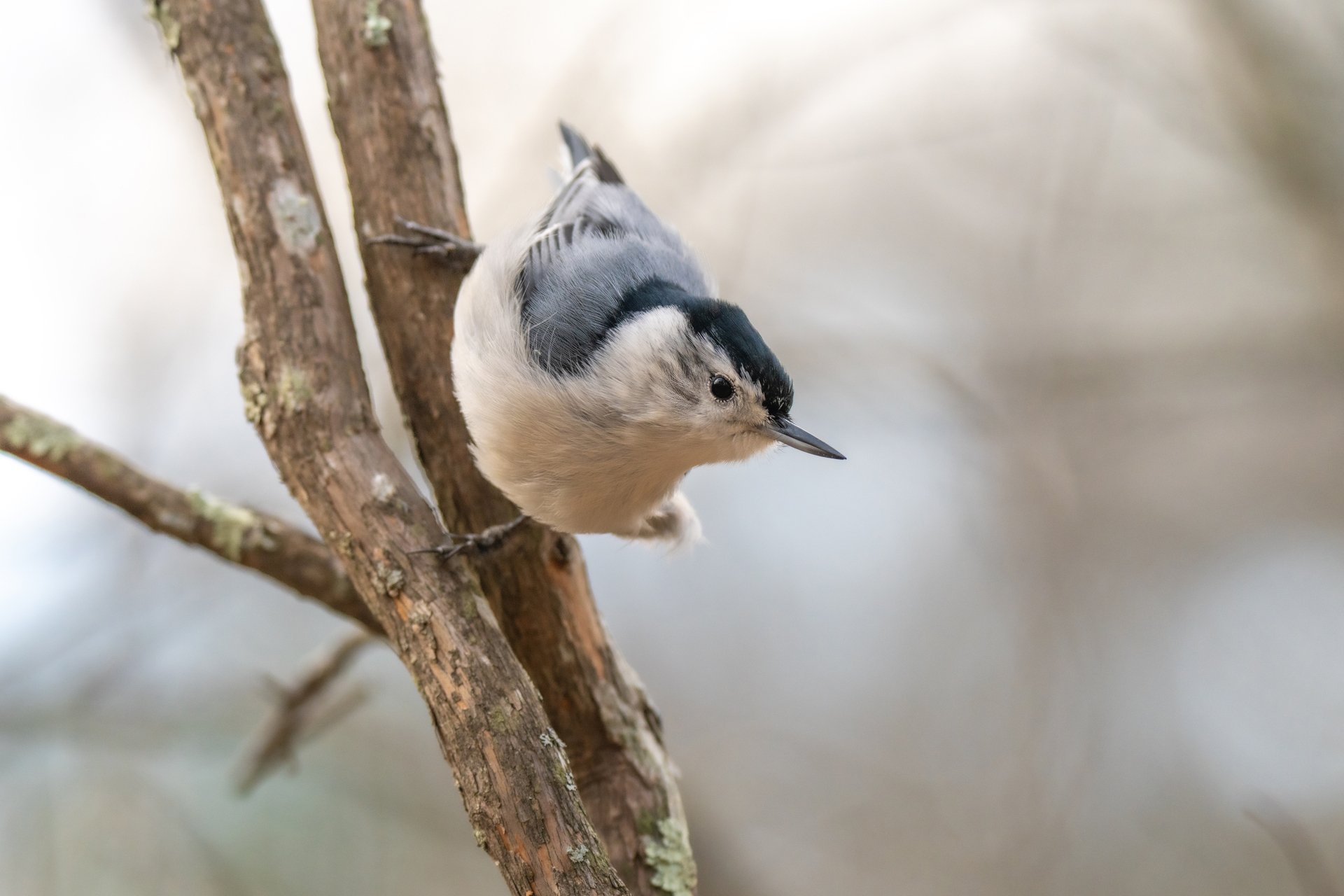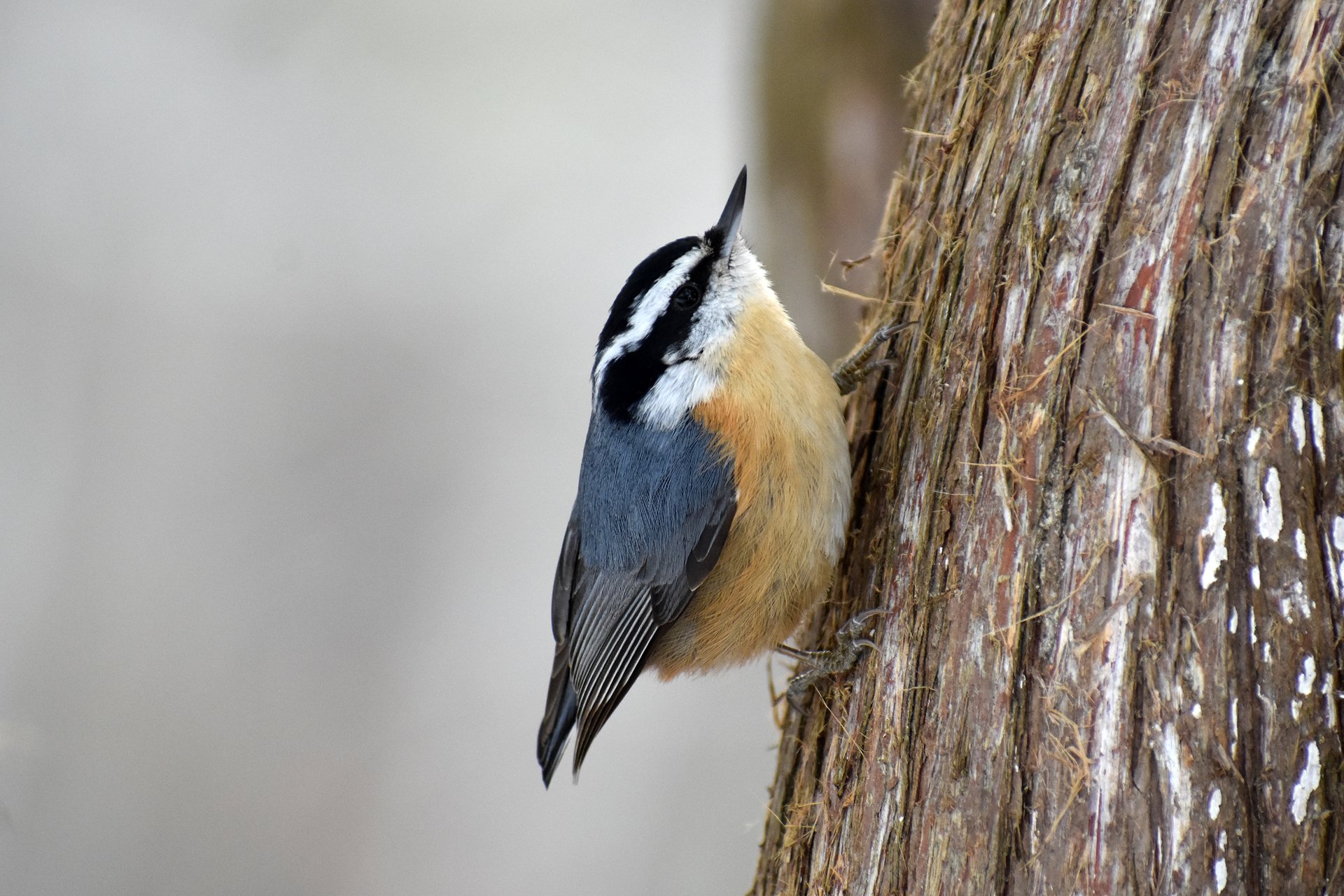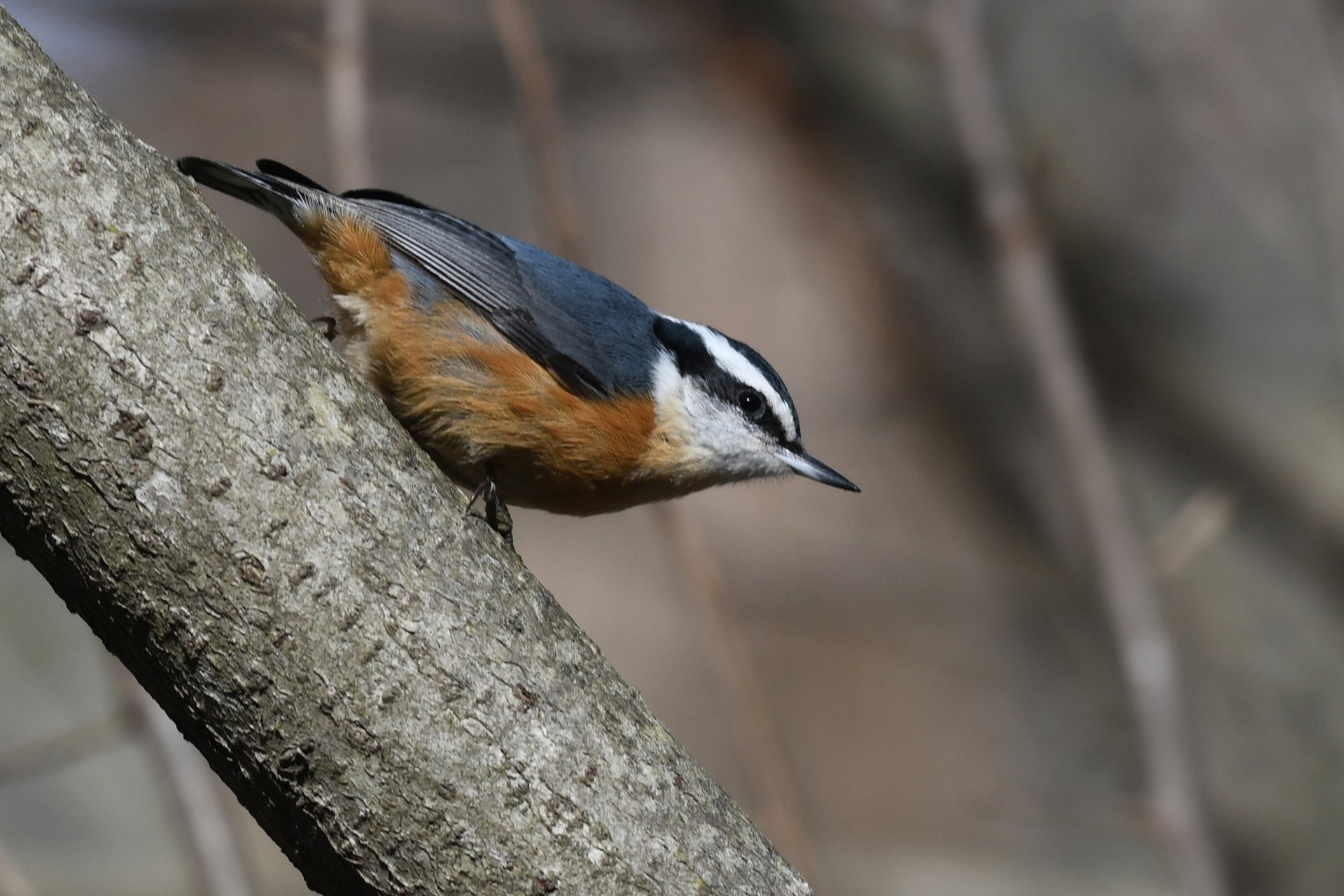White-breasted Nuthatches
Many Massachusetts birds cling and crawl on the trunks of trees, but only the curious little nuthatches descend trees head-first. The name “nuthatch” comes from the way these birds deal with tough seeds. A nuthatch will wedge the seed into a bark crevice or branch crotch and use their chisel-like bill to “hatchet” the “nut” open.
How to Identify Nuthatches
There are two species of nuthatches in Massachusetts: white-breasted and red-breasted.
White-breasted Nuthatch
At just shy of six inches long, white-breasted nuthatches are the larger of the two and also more commonly seen. They are bluish-gray above, with black caps on their heads. Their faces, breasts, and bellies are white, with rusty coloration around the bird’s vent. Their bills are fairly long and sharply pointed. White-breasted nuthatches give a distinctive nasal yank yank call, which is easy to recognize once heard.
Red-breasted Nuthatch
The smaller conifer-loving red-breasted nuthatch is reddish-orange below and has a bright white stripe across the eye. Red-breasted nuthatches are most commonly encountered in western and north-central Massachusetts, though they can be found all the way out to the islands. Their call is a higher, reedier version of the white-breasted nuthatch’s, often described as sounding like the tooting of a tiny tin horn.
White-breasted Nuthatch Call
Red-breasted Nuthatch Call
Nuthatch Behavior
In addition to their distinctive habit of descending trees head-first, nuthatches will crawl all over tree trunks and larger branches, looking for food in the crevices.
Nuthatches tend to be more wary. They may hitch around to the opposite side of a tree to avoid a curious observer. And while they will readily visit feeders, nuthatches tend to collect just one seed at time and carrying it off to handle and eat somewhere nearby.
Where Can I See Nuthatches?
As a bird of open mixed forests, white-breasted nuthatches have adapted very well to Massachusetts’ growing community of wooded suburbs. They appear to be increasing in all seasons and can be found across the Commonwealth. Red-breasted nuthatches are also increasing, though they remain less widespread than white-breasted nuthatches.
How Mass Audubon is Supporting Birds in Massachusetts
Mass Audubon works at our wildlife sanctuaries and beyond to ensure that the nature of Massachusetts continues to thrive. By scientifically monitoring Massachusetts birdlife, Mass Audubon informs important conservation decisions and launches targeted initiatives to help at-risk species. In addition, fostering healthy habitats, supporting native species, and educating people about the importance of nature conservation is critical to our success. Learn more about our work
How You Can Support Birds in Massachusetts
Mass Audubon supports birds like nuthatches every day, but we couldn’t do it without the support of our 160,000+ members.
Help support nuthatches, and birds like them, by becoming a member today.
Upcoming Bird Programs
See MoreBird Research in Action
-
Wellfleet Bay Wildlife Sanctuary, South Wellfleet
-
Friday, November 1
9:15-10:15am
Adults & Families - 8 & up
Level Up Your Birding: Waterfowl on Berkshire Lakes
-
Pleasant Valley Wildlife Sanctuary, Lenox
-
2 classes starting
Friday, November 1
5:00-6:30pm
Adults
Saturday Morning Birding
-
Broadmoor Wildlife Sanctuary, Natick
-
Saturday, November 2
8:00-10:00am
Adults
Stay Connected
Don't miss a beat on all the ways you can get outdoors, celebrate nature, and get involved.



